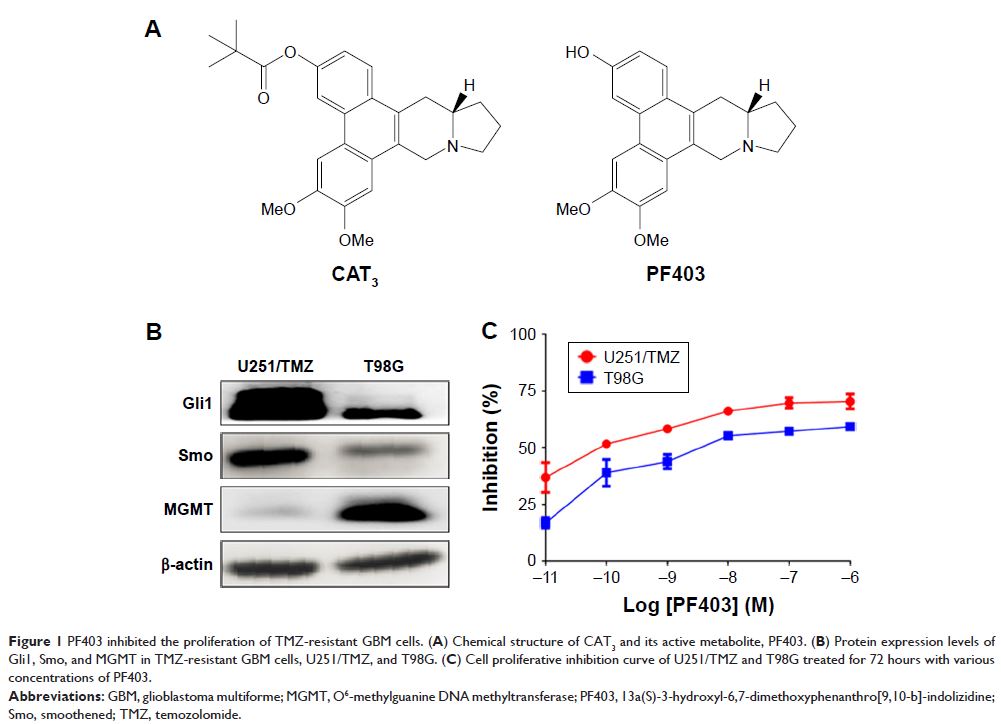9 0 8 0 2
论文已发表
注册即可获取德孚的最新动态
IF 收录期刊
- 2.6 Breast Cancer (Dove Med Press)
- 3.9 Clin Epidemiol
- 3.3 Cancer Manag Res
- 3.9 Infect Drug Resist
- 3.6 Clin Interv Aging
- 4.8 Drug Des Dev Ther
- 2.8 Int J Chronic Obstr
- 8.0 Int J Nanomed
- 2.3 Int J Women's Health
- 3.2 Neuropsych Dis Treat
- 4.0 OncoTargets Ther
- 2.2 Patient Prefer Adher
- 2.8 Ther Clin Risk Manag
- 2.7 J Pain Res
- 3.3 Diabet Metab Synd Ob
- 4.3 Psychol Res Behav Ma
- 3.4 Nat Sci Sleep
- 1.9 Pharmgenomics Pers Med
- 3.5 Risk Manag Healthc Policy
- 4.5 J Inflamm Res
- 2.3 Int J Gen Med
- 4.1 J Hepatocell Carcinoma
- 3.2 J Asthma Allergy
- 2.3 Clin Cosmet Investig Dermatol
- 3.3 J Multidiscip Healthc

CAT3 是 13a(S)-3-羟基-6,7-二甲氧基菲罗啉 [9,10-b] - 吲哚里西定的前药,通过 Hedgehog 信号通路包围替莫唑胺抗性胶质母细胞瘤,与 O6-甲基鸟嘌呤 DNA 甲基转移酶表达无关
Authors Ji M, Wang L, Chen J, Xue N, Wang C, Lai F, Wang R, Yu SS, Jin J, Chen X
Received 23 January 2018
Accepted for publication 24 April 2018
Published 25 June 2018 Volume 2018:11 Pages 3671—3684
DOI https://doi.org/10.2147/OTT.S163535
Checked for plagiarism Yes
Review by Single-blind
Peer reviewers approved by Dr Amy Norman
Peer reviewer comments 2
Editor who approved publication: Dr Faris Farassati
Purpose: Glioblastoma
multiforme (GBM) is a malignant high-grade glioma with a poor clinical outcome.
Temozolomide (TMZ) is the first-line GBM chemotherapy; however, patients
commonly develop resistance to its effects.
Materials and
methods: We investigated the antitumor
activity of CAT3 in TMZ-resistant
glioblastoma cell lines U251/TMZ and T98G. Orthotopic and subcutaneous mice
tumor models were used to investigate the effects of various treatment regimes.
Results: We found that PF403, the active metabolite of CAT3, inhibited proliferation of both cell lines. PF403 repressed the
Hedgehog signaling pathway in the U251/TMZ cell line, reduced O6-methylguanine DNA methyltransferase (MGMT) expression, and abolished
the effects of the Shh pathway. Moreover, PF403 blocked the Hedgehog signaling
pathway in T98G MGMT-expressing cells and downregulated the expression of MGMT.
CAT3 suppressed growth
in the U251/TMZ orthotopic and T98G subcutaneous xenograft tumor models in
vivo. We also demonstrated that inhibition of the Hedgehog pathway by PF403
counteracted TMZ resistance and enhanced the antitumor activity of TMZ in vitro
and in vivo.
Conclusion: These results indicate that CAT3 is a potential therapeutic agent for TMZ-resistant GBM.
Keywords: Gli inhibitor, chemotherapy, lomeguatrib, xenograft tumor model
